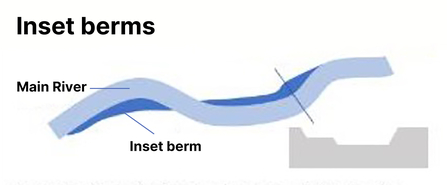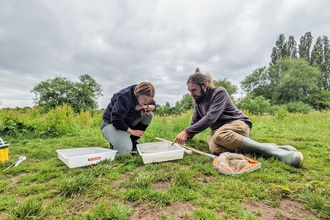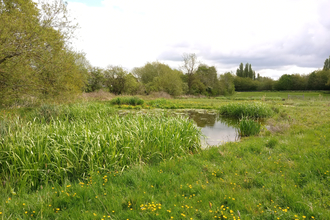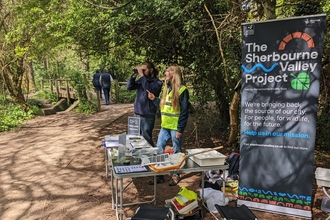On 31st July 2023, we began carrying out weir mitigation works in Lake View Park with approved contractors. This was the first contractor carried out restoration work that was actioned by The Sherbourne Valley Project. The project will re-naturalise the River Sherbourne which flows through Coventry, improving it for nature and for local communities. These works will have a positive effect on the river in both the short-term and long-term.
What is Weir Mitigation?
A weir is a small barrier built across a stream or river to raise the water level slightly on the upstream side. Weirs were traditionally built and placed to manage water, and at the time, their installation's effects on the environment weren't well thought out or understood. It was later found that they changed the way rivers naturally functioned and how they interacted with the floodplain, which had a significant effect on water quality, aquatic ecology, and the surrounding ecosystem. Weir mitigation is the restoration work done to bypass the weir structure so that upstream raising of water levels is avoided. By allowing water to flow freely, mitigating a weir enhances water quality.
Weir mitigation is also very beneficial to fish and invertebrate species because weirs restrict their migration. All aspects of aquatic ecology are improved by weir mitigation, including the formation of a more diverse ecosystem and the restoration of the riverbed and banks. Following mitigation, there is usually evidence of a higher diversity of fish and invertebrate species both upstream and downstream.
Action around renaturalising the river, including weir mitigation, was approved by community consultation surveys carried out by the project in April 2022.
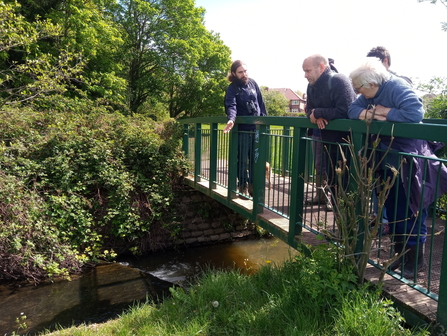
Alex Jones, Natural Heritage Officer for the Sherbourne Valley Project, describing the weir in Lake View Park.
Update:
The works carried out were very successful, with the weir being mitigated due to the water levels of the river rising above the weir level. The riffle structure has also settled very nicely and created a dynamic environment within the river that will be beneficial to local wildlife.
We also produced a video explaining the works being carried out, which can be found on our project YouTube Channel here.
Outline of works:
A combination of inset berms and riffle creation will hope to raise the water level and bypass the weir structure.
Riffle creation - A riffle is a shallow landform in a flowing channel, with fast, turbulent water running over rocks. The riffle will be created by introducing a dynamically stable mix of gravels and cobbles (between 10 and 120mm) downstream of the weir to raise water levels enough upstream. This will provide a suitable depth of water across the weir to provide fish passage.
Inset berm creation - a length of bank on either side of the riffle will be lowered to create an 'inset berm'. Berms are low level shelves constructed in a river channel to reinstate the natural bending of the river and create a low inset floodplain. This will help to manage increased water levels locally, as well as create bank-side habitat diversity and provide a more natural width-depth ratio generally, as opposed to its current heavily incised and disconnected channel.
Our methods and working avenues:
We have gone through all the correct avenues to secure permission from the council (who are an active partner in the project) and get a bespoke flood risk permit from the Environment Agency (who review it from a flood risk, biodiversity and fisheries perspective). They are happy that we are carrying out adequate environmental protection measures for the works which include:
- Silt control- silt mat and curtain downstream of works to capture any silt disturbed during the works and appropriate removal off site once finished.
- Only taking out the necessary trees/tree limbs to allow the creation of the inset berms after doing the necessary checks for bird nests and any bat roosting potential.
- Carrying out works outside of the coarse fish breeding season.
- Carrying out a water vole survey of the project site and above and below the project site (despite not having had a record here since 2007).
- Removing all Himalayan balsam from the site before works take place to ensure we don’t spread INNS and ensuring all correct biosecurity measures are in place with the contractor during the movement of machinery and works.

